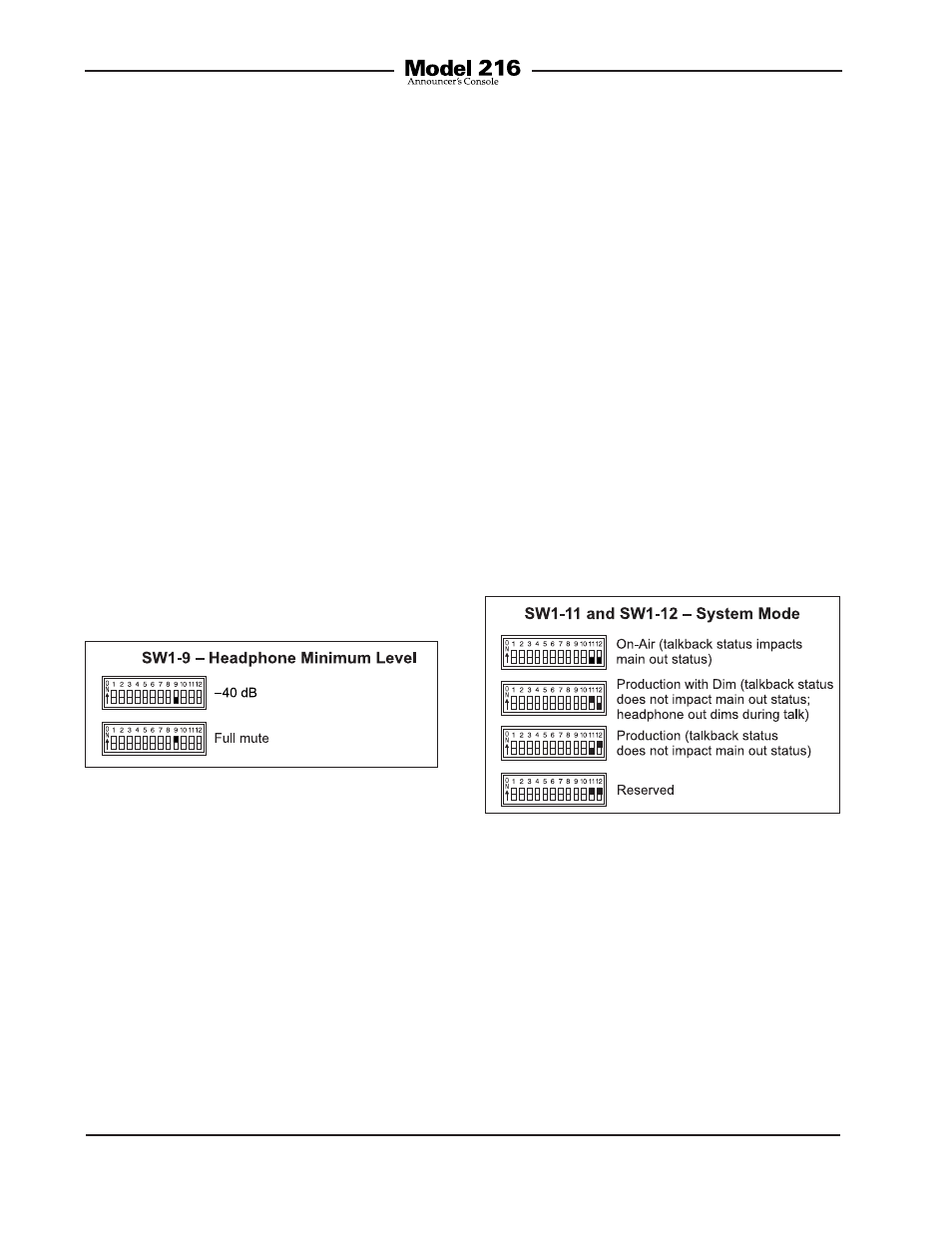Headphone minimum level, Operating modes – Studio Technologies 216 User Manual
Page 18

Issue 1, July 2014
Model 216 User Guide
Page 18
Studio Technologies, Inc.
panel. Audio input channel 3 is assigned
to the left headphone output channel
and audio input channel 4 is assigned
to the right headphone output channel.
The overall level of audio inputs 3 and 4
is controlled by the rotary level control lo-
cated on the right side of the front panel.
The sidetone function will not be active.
Headphone Minimum Level
Switch 9 is used to configure the head-
phone output’s minimum level. In the
–40 dB setting the minimum headphone
output level is approximately 40 dB below
maximum. The headphone output will nev-
er fully mute. This ensures that any audio
signal present on the assigned audio input
channels (1 and 2 or 1, 2, 3, and 4) will
always be present on the headphone out-
put. In most on-air broadcast applications
this is the appropriate setting, ensuring
the some level of signal is always present.
When the rotary level control on the right
side of the front panel has been assigned
to control the sidetone level the setting of
the headphone minimum level mode will
not impact it. In this case when the control
is in its fully counterclockwise position it
will always cause the sidetone level to be
fully muted.
Operating Modes
Switches 11 and 12 are used to configure
the overall operating mode of the Model
216. Specifically, they determine how the
main output channel operates vis-à-vis the
talkback output channels as well as one
facet of the headphone output’s function.
Understanding how these three modes
impact overall system operation will en-
sure that correct operation and maximum
usability will occur.
Figure 8. Headphone minimum level switch
settings
Figure 9. System mode settings
When full mute is selected moving any level
control to its fully counterclockwise position
will cause its associated channel to fully
mute. If a rotary level control is set to serve
as a balance control, moving it to either fully
counterclockwise or fully clockwise posi-
tion will cause the associated signal to fully
mute. Selecting the full mute mode may be
appropriate for applications where minimiz-
ing the chance of audio “leakage” is impor-
tant. This could occur when the connected
headset or headphones are at times placed
on a desk or tabletop.
• When selected to the on-air mode, the
audio signal on the main output chan-
nel will mute whenever the audio signal
on either or both of the talkback output
channels is active. The on-air mode
should be selected for all on-air broad-
cast applications when it’s imperative
that the audio signal on the main output
channel be muted whenever on-air talent
uses a talkback output channel to com-
municate with production personnel.
